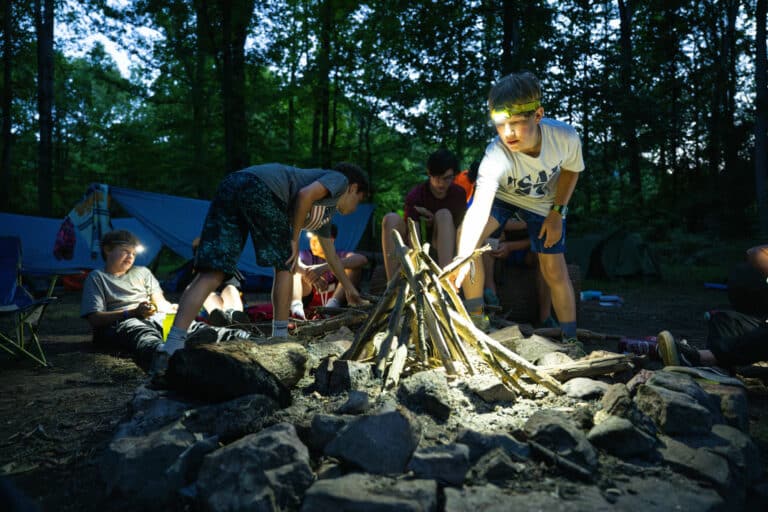For years, rock climbing in the High Country has been heralded as some of the best in the country. From the beautiful views and perfect stone of Ship Rock on the Blue Ridge Parkway, to the shady summertime crags of perfect stone hidden deep in the Pisgah Forest – there is something special about climbing in the High Country that has been drawing throngs of visitors to our area for years. Until recently, visitors to the area either scoured the forest for these seemingly mythical climbing destinations in hopes of stumbling upon a secret gem, or relied upon word-of-mouth directions from other climbers and gear shop employees to locate these hard-to-find climbing destinations scattered around the area.
But now, thanks to Mike Grimm, author of The High Country Cragger , a new guidebook about climbing in the area, visitors can check out seven different climbing destinations, all of which offer climbers a wide-range of climbs in a variety of unique settings. The book is laid out simply, providing accurate directions, detailed topography of the crags and the different routes, excellent photos, and an interesting history of climbing in the High Country. “The idea behind this style of guide is to keep it light, simple and easy to update,” Grimm says in the book. “That way, you don’t have to carry around the guide for Moore’s Wall (and a bunch of other areas) while you’re schlepping it up to Ship Rock.” The guide consists of 58 pages of colorful descriptions and contains information on more than 170 routes ranging from 5.6 to 5.14.
For the author, Mike Grimm, co-owner of Misty Mountain Threadworks, a local climbing gear manufacturer based in Valley Crucis, sharing his love of climbing in the area comes naturally. “My main motivation was that I just wanted to give people good directions on how to get to the crag and what to climb when they got there,” Grimm said in a recent interview. “Because, working here at Misty Mountain people call all the time – I’m always talking to climbers – some random climber from out west would drop us an email, or someone would come in to buy a harness and I’d end up drawing them maps, so it made sense to me to make something all inclusive that people could have and use to get to where they want to go.”
After moving to the area in the Fall of 1980 to attend Appalachian State University, Grimm, or Grimbo as many of his friends know him, became obsessed with searching out new areas with fellow climbers and putting up new, previously unclimbed routes. He was part of the early climbing crews that spent their time exploring the newly discovered climbing spot known as Ship Rock, although finding it for the first time with the vague directions he and his friends had been given proved to be difficult. “It took us awhile before we could even find Ship Rock,” Grimm said. “The first time we went up there we got lost, and when we found it we still weren’t sure we were even at Ship Rock.”
After Grimm’s initial exploration and discovery of Ship Rock, he and others began exploring the vast potential of climbing at Grandfather Mountain. “It was in the middle to early ’80’s before Ship Rock started to catch on really well as a climbing spot,” Grimm said. “And at the same time, climbers were developing Indian Rocks, Pilot Knob, the Jewels and some of those other crags up there. Back then the Parkway wasn’t there, there was nothing between 221 and Shiprock, all the climbing on that side of the mountain was all exploratory – all you needed to climb at Grandfather Mountain was a hiking permit.”

Although the early days of Grandfather Mountain rock climbing are looked back on with nostalgia, it is an area that Grimm, and many others in the climbing scene around Boone, would love to see reopened. “These days all of those great spot are closed, and it’s a shame,” Grimm said. “If we could get the backside of Grandfather Mountain open to climbing it would do so much in helping to bring more climbers and people into the area to go climbing — it would do wonders for tourism in Watauga County.”
However, even without the countless climbing destinations that are now closed, the Grandfather Mountain region still remains the premier area for climbing in the High Country. Most of the many crags and outcroppings along Highway 221 that are open to climbing have been documented in The High Country Cragger and they provide climbers with some of the best concentration of high-quality stone in the area. People have been flocking to these boulders and these crags for more than thirty years now, and Grimm, and many others like him in the community, are glad to see them come.

“Scattered along the flanks of the majestic Grandfather Mountain, the crags of the North Carolina High Country make up a diverse and important climbing resource,” Grimm writes in his guide. “Many of these crags are only minutes from the car, yet have remained hidden in the woods for years. They are unique to one another, as is the climbing style they each require. For example, the airy and exposed climbing of Ship Rock is quite different from the slabby, roadside climbing at the Dump. The steep, friendly jug hauls of Little Wilson are the polar opposite to the odd ball horror shows of Moon Rocks. This diversity ensures that climbing in the High Country will never get boring… The diversity and convenience of climbing in the High Country of North Carolina, along with the friendly local climbing scene and proximity to the college town of Boone, makes for a truly outstanding climbing experience.”
The High Country Cragger is available at rock climbing gear shops, outdoor retailers, and a variety of other locations across the United States. In the High Country, Footsloggers Gear Shop and the Blue Moon Station on 221 carry the guide. A complete list of retailers is available online. The guide is also available for purchase online at www.fullmantlepress.com. In addition to the High Country Cragger, Mike has also published a guide to the West Side of the Linville Gorge.
Currently, Mike Grimm is working on a complete guide to climbing in the Linville Gorge. The guide is scheduled to be published in the Fall of 2010. For more info click to www.fullmantlepress.com









